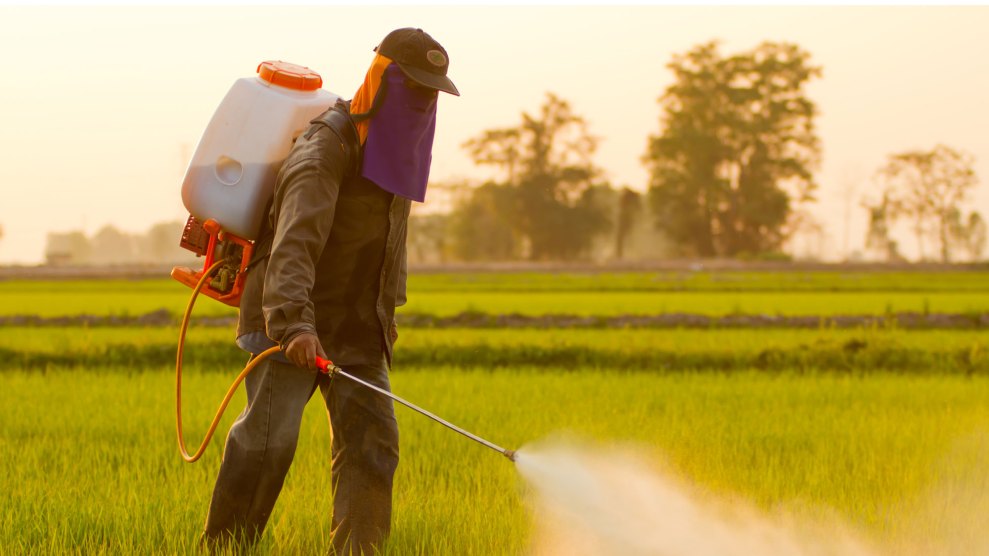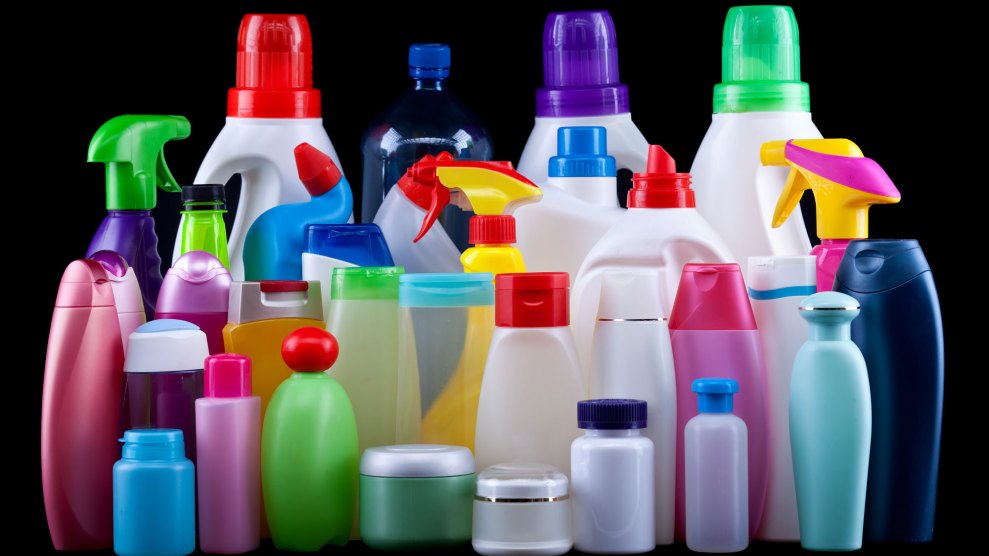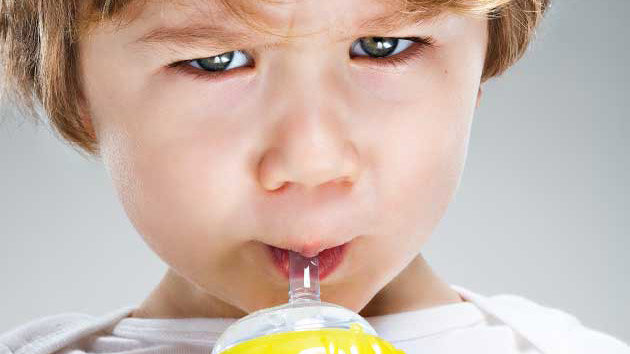
<a href=http://www.shutterstock.com/pic-177847724/stock-photo-farmer-spraying-pesticide.html?src=pd-same_artist-169450757-1mxvZ7EUYklJid2MlU8OuA-1>PigginFoto</a>/Flickr
An estimated 1.7 million people will be diagnosed with cancer in 2016. While some of this is rooted in sheer genetics, many of these cases may be sparked by substances in the air, soil, food, and materials around us.
A new report released today by the Environmental Working Group shows just how many of these substances end up inside of us. Pulling data from places like the Centers for Disease Control and Prevention, EWG detected up to 420 possible carcinogens—the name for cancer-causing agents—in people’s bodies.
“A lot of [known or likely carcinogens] are in products we buy off the shelf and assume are safe,” said Curt Dellavalle, lead author on the report.
Using data from the CDC’s National Health and Nutrition Survey, the report outlines the cancer risk based on a person’s exposure to certain chemicals. Over half of the people tested had levels of arsenic and acrylamide in their bodies high enough to give them a more than 1 in 10,000 risk of cancer. Arsenic is used in products like pesticides, and acrylamide is sometimes found in food packaging and certain foods—potato chips and French fries have been found to have higher-than-average amounts of it. Other commonly found chemicals included benzene, found in petroleum, and DDT and DDE pesticides.
Just because a person has some exposure doesn’t mean he is exposed to threatening concentrations. It’s not that you’re “definitely going to get cancer,” Dellavalle said. Individuals vary greatly in their exposure to different chemicals. But knowing just how many potential threats they’re exposed to should help people make better decisions for themselves, Dellavalle said.
“Many of the carcinogens this study documents in people find their way into our bodies through food, air, water and consumer products every day,” EWG President Ken Cook wrote in a press release. “Dozens of them show up in human umbilical cord blood—which means Americans are exposed to carcinogens before they’ve left the womb.”
The EWG report also outlines research from the Halifax Project, which looked at the potential risks of chemical combinations. While past public health efforts worked to limit exposure to “complete carcinogens,” researchers are now trying to assess the effects of chemical mixtures that, when combined, could be carcinogenic.
For example, the report notes the combination of Bisphenol A, or BPA (commonly found in food or beverage containers), heavy metals sometimes found in drinking water, and perfluorooctanoic acid (PFO), which is used in fabric stain repellents. When put together, these chemicals can have effects on cells in the body similar to tobacco.
“Many chemicals that can interfere with individual cancer-related processes are not complete carcinogens,” the EWG website explains. “But exposure to combinations of these substances could interfere with multiple cancer-related processes, overwhelm the body’s defense mechanisms, and result in cancer.”
This report comes the same week that President Obama could sign updates to the Toxic Substances Control Act into law. While the updates do give the Environmental Protection Agency more freedom to test the safety of household products, some people criticize the new legislation for removing states’ power to pass laws that are tougher than federal restrictions.
Dellavalle said enhancing the power of state governments, along with additional testing and research, will be important in reducing our exposure to these cancer-causing chemicals.














